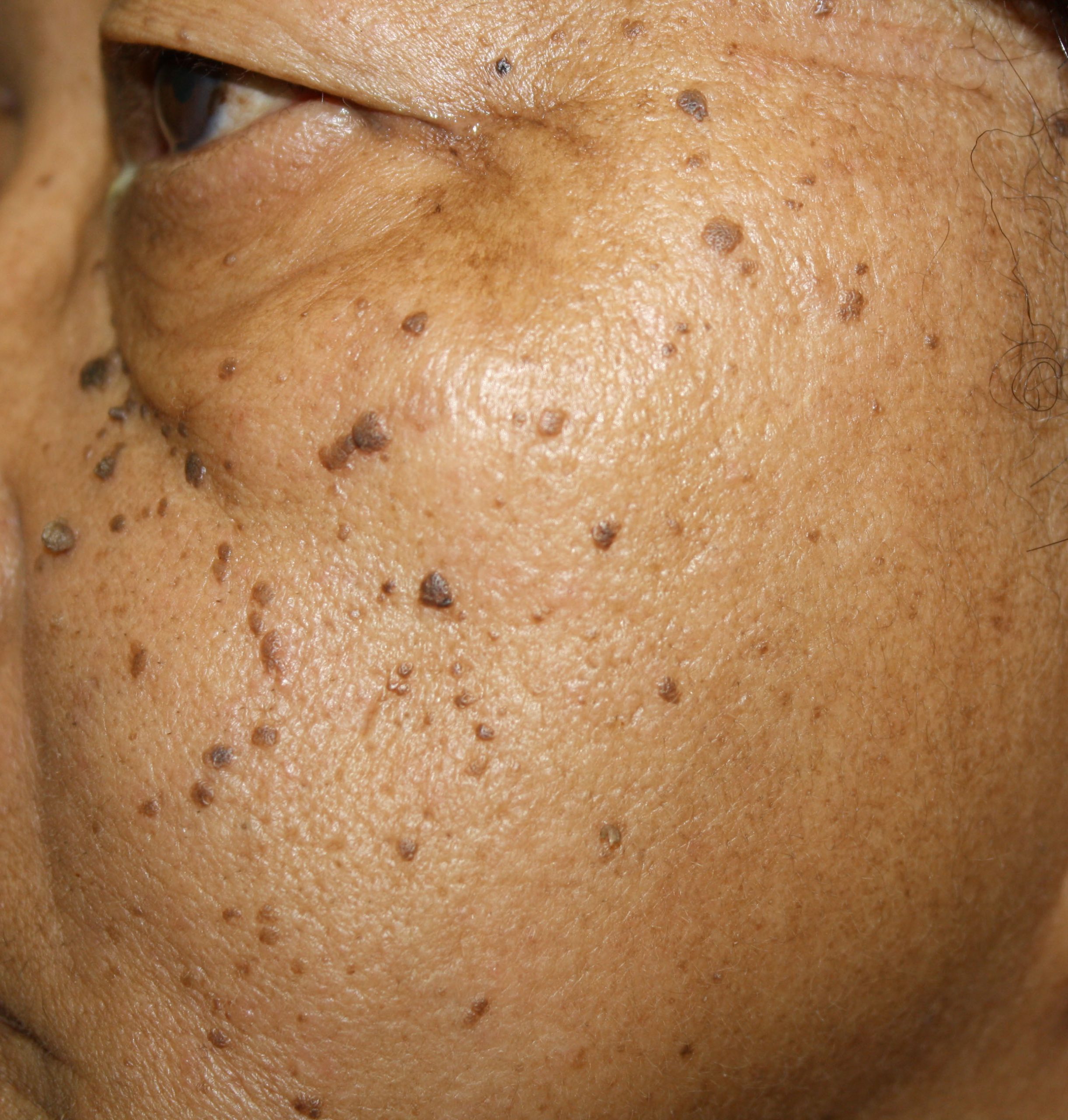Written by Dr. Ringpfeil

Dermatosis papulosa nigra refers to the presence of benign dark brown or black papules that occur on the cheeks of individuals with dark skin. These papules can also develop on the eyelids and neck. They are considered a type of seborrheic keratosis and often have a hereditary component.
The diagnosis of dermatosis papulosa nigra can typically be made based on the clinical appearance of multiple small brown soft papules on the cheeks. Biopsy is usually not necessary, and the presence of similar lesions in family members further supports the diagnosis.
Skin lesions caused by dermatosis papulosa nigra are benign and generally do not require treatment. However, if desired for cosmetic reasons, the lesions can be removed through a process called curettage (scraping). Topical retinoid treatment can help expedite the removal process. Following the procedure, temporary white spots and scabbing may occur, but they typically resolve within two weeks. It’s important to note that insurance usually does not cover the removal of these benign lesions, and removing existing lesions does not guarantee the absence of new ones.
Patients seeking consultation for dermatosis papulosa nigra lesions are often reassured once they learn that the lesions are benign.
There is no known method for preventing dermatosis papulosa nigra lesions, as there is a genetic predisposition for their development.
Patients ask Dr. Ringpfeil answers
Please feel free to use this form to ask our dermatologists questions about this treatment.